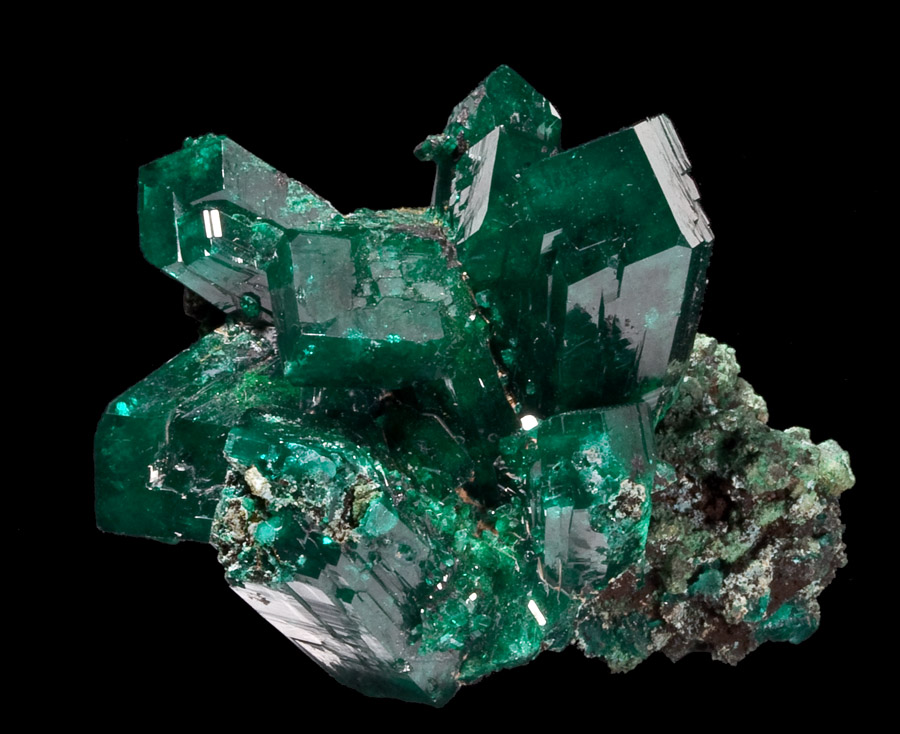| Crystal system | Hexagonal |
| Transparency | Transparent to translucent |
| Luster | Vitreous |
| Fracture | Conchoidal to Uneven |
| Cleavage | Perfect rhombohedral |
| Specific Gravity | 3.30 |
| Hardness | 5 |
| Optical Character | Uniaxial + ; Double Refractive |
| Refractive index | 1.655-1.708 |
| Birefringence | 0.053 |
| Dispersion | 0.032 |
| Fluorescence | |
| Pleochroism | Weak |
| Chemical Formula | H2CuSiO4 |
| Comments | |
| Streak | White |
Dioptase (dye-OPP-tase) is an interesting mineral because its color is comparable to that of fine emerald. Certainly, there is no other mineral with a possible gem use that has a more intense green color than dioptase. Unfortunately, however, its low hardness (5) and poor toughens (caused by perfect rhombohedral cleavage) make it a very poor choice from the standpoint of durability; for this reason, it is more of a curiosity than a gemstone.
This mineral is found in some of the copper-mining areas of the world, usually, as an oxidation product near the surface. The major sources are Hindouli and Pimba, Republic of the Congo-Brazzaville; the Katanga district, Zaire; and Guchab, South-West Africa. It has also been found in South America at Copiapo, Chile, and at Cordoba, Argentina. Fine specimens have come from the Kirghiz Steppes, in Russia, and from Transbaxkalia, Siberia. Another source is Rezbanya, Roumania. Graham County, Arizona, has also produced some material.
Dioptase is a hydrous copper silicate, with the formula H2CuSiO4. It occurs in the lower symmetry rhombohedral division of the hexagonal system. The fracture is conchoidal to uneven, the streak is white, and the specific gravity is 3.25 to 3.35. There are no characteristic inclusions. Its luster is vitreous and the refractive indices vary, with the low index ranging from 1.644 - 1.666 and the high index varying from 1.696 - 1.720. Since the lower figure remains the same on rotation on the refractometer hemisphere and the upper varies, this uniaxial gem mineral is positive in sign. The birefringence is within .001 of .052. The pleochroism is weak and dispersion measures .022. It is attached by acids but is infusible.
Dioptase is a difficult mineral to facet (usually step cut) because of its perfect cleavage and softness. Because of the low degree of hardness, it grinds away rapidly and the facet edges tend to crumble. Cerium oxide on a lucite lap produces a satisfactory polish. Recommended facet angles are 43° for the crown and 39° for the pavilion.
The principal value of dioptase is as a mineral specimen; fine crystal and crystal aggregates command substantial prices.


